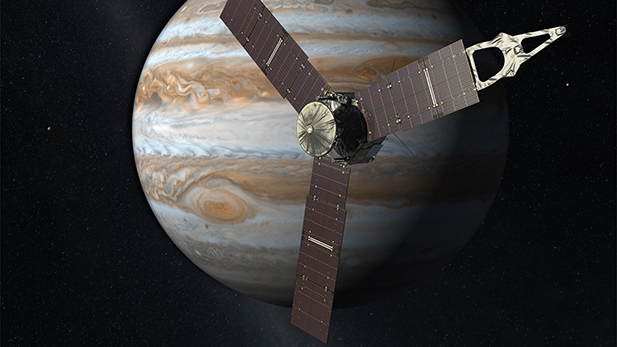 NASA's Juno mission to Jupiter will examine the origin and evolution of the solar system's largest planet.
NASA's Juno mission to Jupiter will examine the origin and evolution of the solar system's largest planet.NASA's Juno spacecraft arrives at the solar system's largest planet Monday to spend 20 months surveying to learn more about its composition and formation.
 University of Arizona planetary scientist William Hubbard
University of Arizona planetary scientist William HubbardUniversity of Arizona planetary sciences professor William Hubbard is among the scientists who are eager to discover what lies beneath the gaseous giant's cloud layers.
"It's a mission designed to probe the deep interior of Jupiter and also to obtain new data on deeper layers of its atmosphere. So it’s going to get closer to Jupiter and linger closer to Jupiter than any previous spacecraft,” Hubbard said.
Juno has been traveling 165,000 mph on its journey to Jupiter. The spacecraft left Earth in August 2011. Mission controllers will put the brakes on the spacecraft at 8:18 p.m. Monday as Juno passes over Jupiter's north pole.
The mission is named for the Roman goddess who was the wife and sister of the god Jupiter.
The mission's primary 14-day science orbit will begin Aug. 27. In all, Juno will make 32 large elliptical orbits around Jupiter. It will then crash into the planet so it will not interfere with future exploration of Jupiter's moon Europa.
Jupiter is visible with the naked eye in the western sky from dusk until midnight. Four of its 67 moons are easily observed with a telescope or binoculars on a tripod.

By submitting your comments, you hereby give AZPM the right to post your comments and potentially use them in any other form of media operated by this institution.